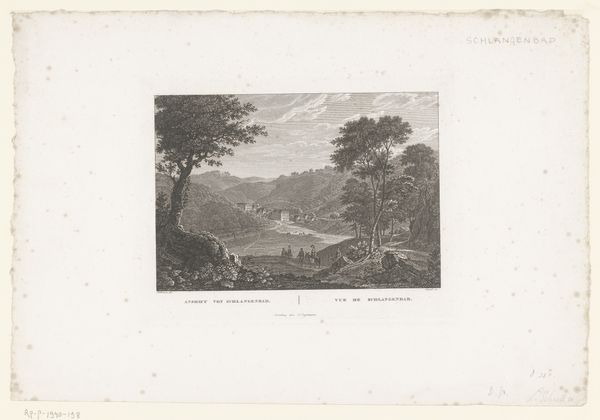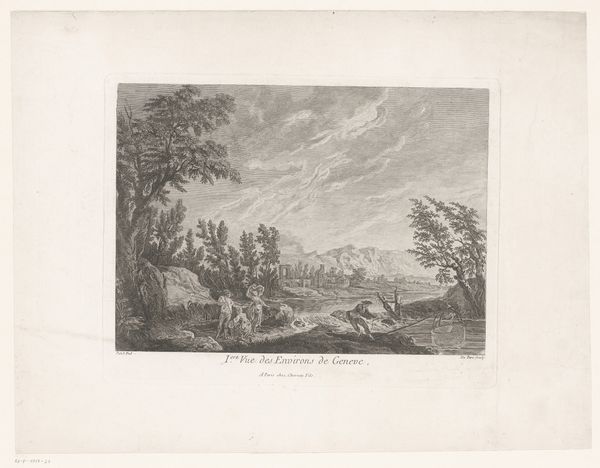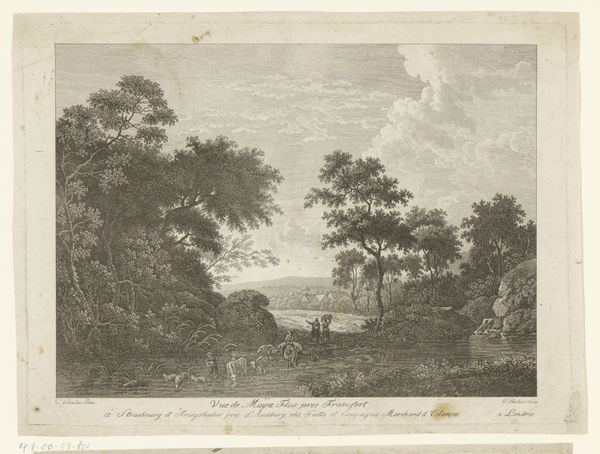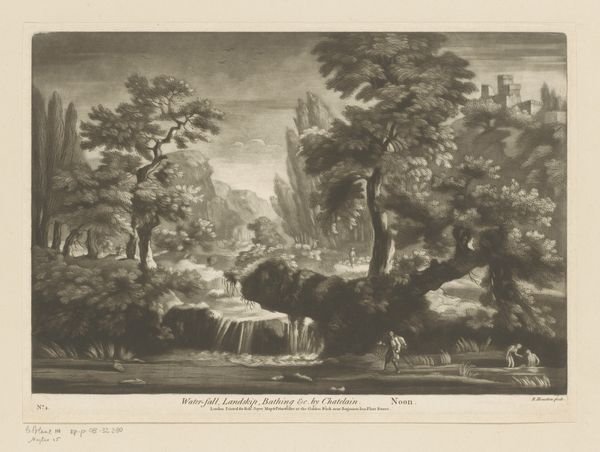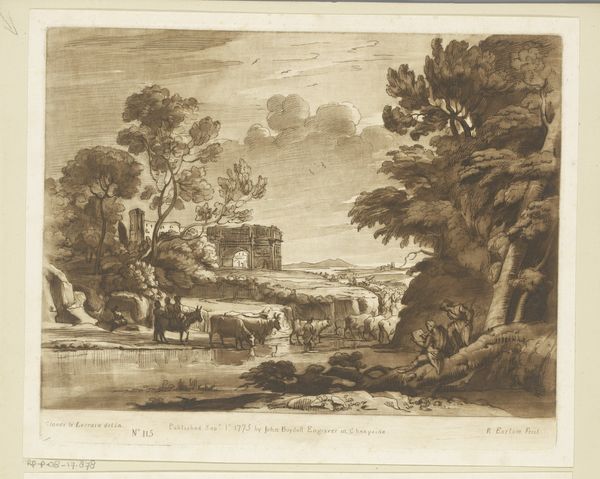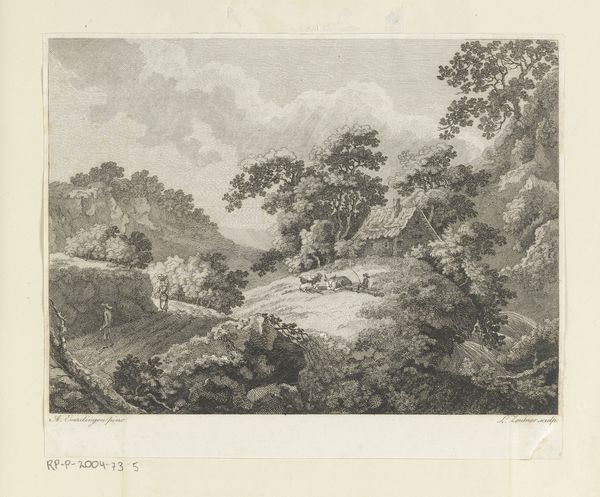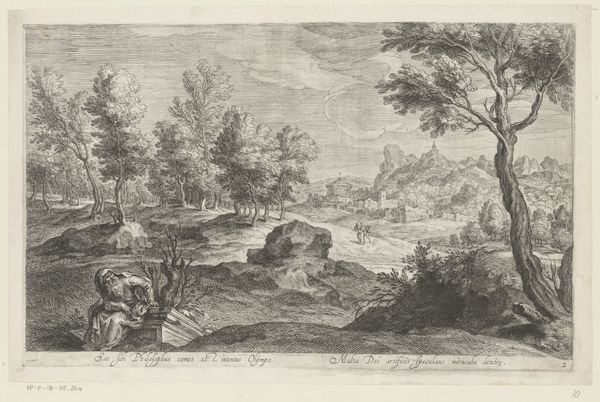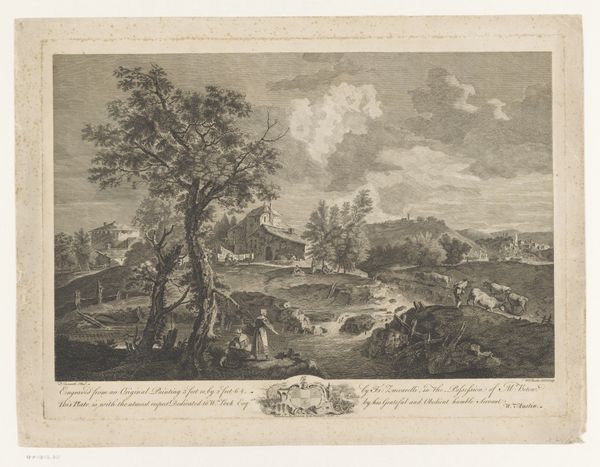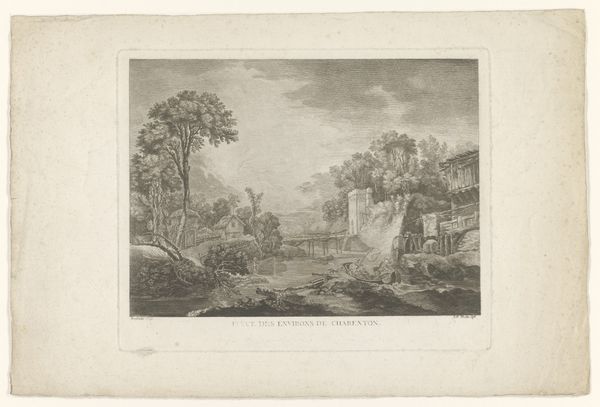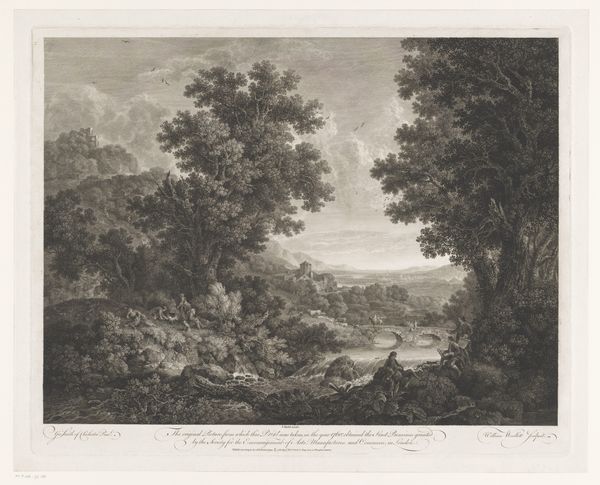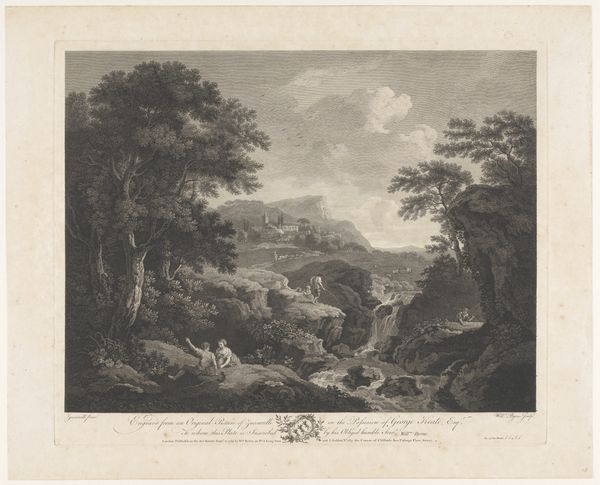
print, etching
# print
#
etching
#
landscape
#
15_18th-century
#
genre-painting
Dimensions: height 319 mm, width 465 mm
Copyright: Rijks Museum: Open Domain
Curator: François Denis Née created this etching, "Landschap in de omgeving van Dresden," sometime after 1763. It's currently held at the Rijksmuseum. Editor: Immediately, I see a stylized landscape, something between a picturesque view and an imagined Eden. It feels theatrical. Curator: Right. This etching depicts a landscape near Dresden, presenting a pastoral scene with figures bathing or resting by the water. We might interpret the landscape through a lens of colonial power dynamics—depicting a seemingly untouched nature available for claim, perhaps even eroticized through the presence of bathing women. Editor: Absolutely, and given it’s an etching, that means a metal plate—likely copper—carefully worked over by Née to create this illusion of softness and light. I'm curious about the intended audience; the materiality and the etching process speaks to a deliberate choice in reproduction and dissemination. Was it to allow more eyes to view the idealized scenery, a claim on landscape ownership? Curator: Undoubtedly. The dedication on the print suggests it was made for a wealthy patron, the Marquise de la Sône. So, yes, you are correct. Its dissemination implies notions of class, privilege, and the gaze, very much connected to power structures within the society it was created in. Considering the etching process itself – laborious, methodical, and reproducible – parallels systems of control. Editor: Precisely. The detail, painstakingly etched into the metal, highlights the investment of labour. The landscapes becomes a crafted commodity for consumption by the elite. There's a strong relationship between the making of the landscape on metal and the making of landscapes into real-world holdings. Curator: Viewing it through an intersectional lens really highlights this entanglement. The artwork is not simply a pretty picture, but a coded representation of power, gender, and the socio-economic context of its creation and consumption. Editor: Well, for me, exploring the etching's materials and fabrication deepens that awareness—makes those hidden layers much more tangible. Curator: I find myself reconsidering the apparent tranquility of the scene—seeing the power dynamics that subtly pervade it. Editor: And I appreciate understanding how the print's creation is deeply embedded in those societal dynamics of the era.
Comments
No comments
Be the first to comment and join the conversation on the ultimate creative platform.
